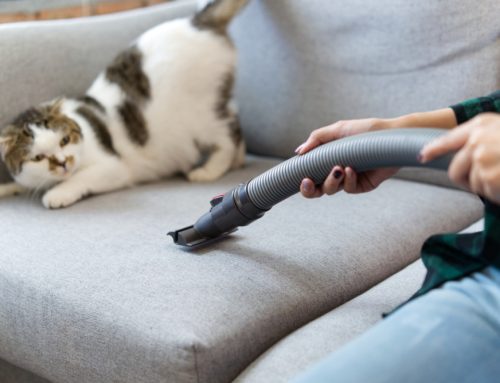 Now that Summer is here, fun warm-weather activities for you and your pets abound. Long walks, chasing Frisbees, hiking, biking, swimming – the joys of summer exercise and play are hard to beat. Sadly, some otherwise healthy warm-weather fun may have unhealthy results for your pets if you aren’t paying attention.
Now that Summer is here, fun warm-weather activities for you and your pets abound. Long walks, chasing Frisbees, hiking, biking, swimming – the joys of summer exercise and play are hard to beat. Sadly, some otherwise healthy warm-weather fun may have unhealthy results for your pets if you aren’t paying attention.
Not-so Fun in the Sun
An awareness of warm weather pet safety is extremely important. Emergency pet clinics receive all sorts of summer-fun related animal trauma, but one of the worst summer emergencies involves overheating. We humans are able to sweat from all parts of our skin, which allows evaporation to cool us down. Dogs, on the other hand, can only sweat from their foot pads, which is not too effective – especially if you are standing on them.
The only ways a dog can get cool are:
However, when outside temperatures and humidity are high, there’s little difference between the inside of the dog and the outside of the dog, so very little cooling can take place. When this happens your pet is at risk of overheating and developing heat stroke.
Hot Weather Pet Safety
Normally a dog’s temperature is between 100.5o F to 102.5o F. If it is even a few degrees higher, your pet may have become overheated. If his or her temperature goes over 105o F, your pet may develop a life-threatening condition called heat stroke.
To avoid heat stroke, be sure to:
Dangerously Hot
Unfortunately there are situations no one can predict, such as getting lost, misjudging distance, or just not noticing how hot it is for your pet because you feel perfectly comfortable. This is when things can go from fun to terrifying.
If your pet shows any of the following symptoms after being exposed to the heat, consider the situation life-threatening. Take him or her to an emergency clinic immediately if he or she:
Emergency First Aid for Heat Stroke
If your pet is showing signs of heat stroke, immediately get him or her into the shade or air conditioning. Wrap your pet in a towel soaked in cool water, or if possible, put him or her in a cool, not cold, bath. Never put your pet in ice water or use ice cubes on his or her skin! This can worsen shock. Call the vet immediately.
Your vet may ask you to take your pet’s temperature. If it is 105o or above, it’s way too high and your vet may suggest a cold water enema or other emergency procedures. Take your pet to the vet even if he or she seems to have recovered.
Sensible Fun in the Sun
Look for cool alternatives to outdoor activities when it’s blistering out. Shady parks and pavilions are good choices, as are starting your activities earlier or later in the day when temperatures are less brutal. Stroll instead of run. Take frequent shade breaks and water-stops. Consider putting in a lawn sprinkler for enjoyable cooling-off.
In all cases monitor your pet in hot weather and avoid letting him or her become overheated. Always carry a pet first-aid kit in the car containing towels, chemical cold packs, and extra water for both drinking and cooling off. Of course if you have any questions about pet safety and warm weather activities call us. We’re here to help.






